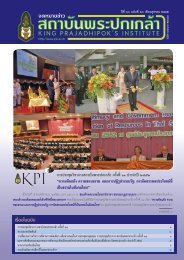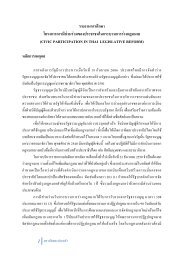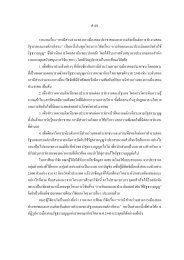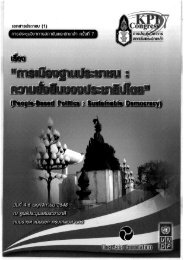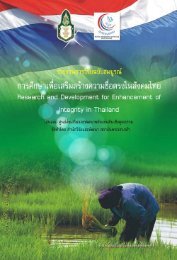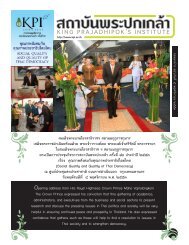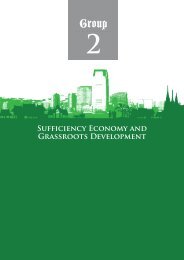Conflict, Legitimacy and Government Reform: Equitable Allocation of ...
Conflict, Legitimacy and Government Reform: Equitable Allocation of ...
Conflict, Legitimacy and Government Reform: Equitable Allocation of ...
You also want an ePaper? Increase the reach of your titles
YUMPU automatically turns print PDFs into web optimized ePapers that Google loves.
78 KPI Congress XI<br />
The work we at CCE <strong>and</strong> KPI are doing together does I believe<br />
<strong>of</strong>fer some hope <strong>and</strong> guidance as to how to address the important<br />
questions posed by the “Rationale.” For that reason I would like to tell<br />
you a little more about the mission <strong>of</strong> civic education as we define it at<br />
the Center for Civic Education <strong>and</strong> the worldwide network <strong>of</strong><br />
individuals <strong>and</strong> institutions with which we are privileged to work around<br />
the world. Finally, I will return to work being done by KPI to prepare<br />
young people to contribute to a Thai society that is just <strong>and</strong> democratic.<br />
Civic Education:<br />
The Primary Mission <strong>of</strong> All Education<br />
The education <strong>of</strong> young people to assume their responsibilities as<br />
citizens in a democratic society should be the central mission <strong>of</strong> schools.<br />
For many contemporary educators this assertion may appear debatable<br />
in first part <strong>of</strong> the 21 st century, but it would not have been for most <strong>of</strong><br />
the history <strong>of</strong> the public education system in the United States. The<br />
primary impetus for establishing public schools in the United States was<br />
to educate a diverse American population into a literate <strong>and</strong> informed<br />
citizenry. Our public school system was established in order to make<br />
Americans one people, or as it says on the Great Seal <strong>of</strong> the United States<br />
printed on the back <strong>of</strong> each dollar bill, E Pluribus Unum, Out <strong>of</strong> Many,<br />
One.<br />
In his farewell address, our first President, George Washington,<br />
argued for the creation <strong>of</strong> “institutions for the general diffusion <strong>of</strong><br />
knowledge” <strong>and</strong> made a classic argument for investing in education in a<br />
democratic society. These were his words: “In proportion as the<br />
structure <strong>of</strong> a government gives force to public opinion, it is essential<br />
that public opinion should be enlightened.”<br />
Let me put his words in more contemporary English for the sake <strong>of</strong><br />
translation. Washington was arguing that if the voice <strong>of</strong> the people is to<br />
be given significant weight in government then the people must be<br />
educated to play an enlightened <strong>and</strong> responsible role. The development<br />
<strong>of</strong> the American public school system in the 19 th century was based on



